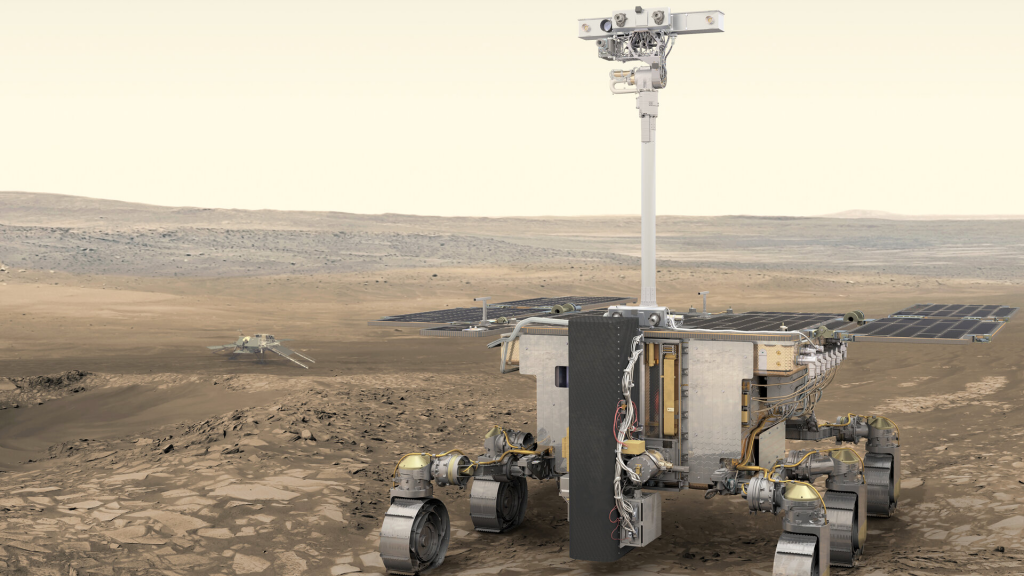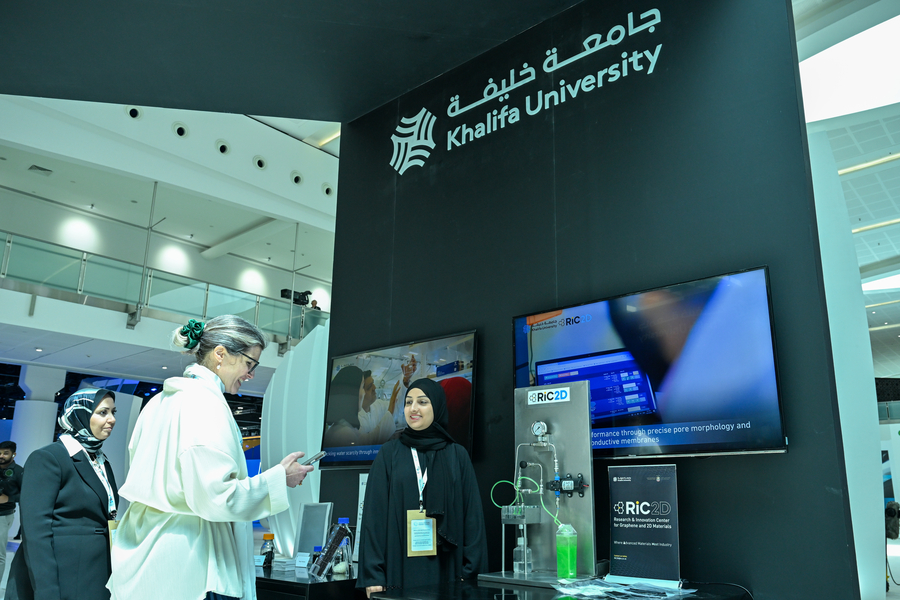Involvement in ongoing and future national and international space missions is at the core of our activities at the SPSC. Our members aim to be involved in various ways including data analysis, operations, planning of observations and measurements, and data archiving. Below is a list of missions or instruments our members are currently involved in, which span a wide range of bodies in our solar system!
Emirates Mars Hope Mission
Emirates Lunar Mission
CaSSIS, onboard ESA’s ExoMars Trace Gas Orbiter
HiRISE, onboard NASA’s Mars Reconnaissance Orbiter
Comet Interceptor (European Space Agency “ESA”)
ESA’s ExoMars Rover (Rosalind Franklin)
The Emirates Hope Mission (2021-)
Mission website: https://www.emiratesmarsmission.ae
The Emirates mission is UAE’s first space exploration mission and the first Arab mission to Mars. It launched in 19 July, 2020, and arrived at Mars in early 2021, where it has been conducting scientific investigations of the Martian atmosphere ever since. The mission carries a suite of instruments with the objective of studying the entire atmosphere.
Our members are directly involved in the data analysis of the mission.
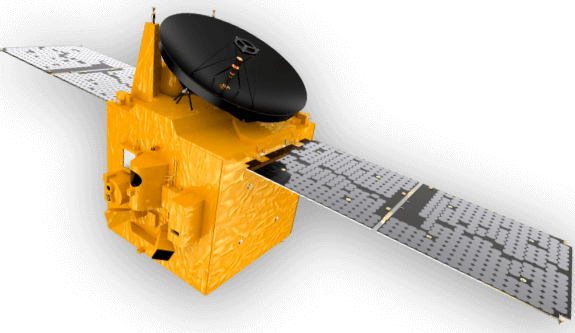
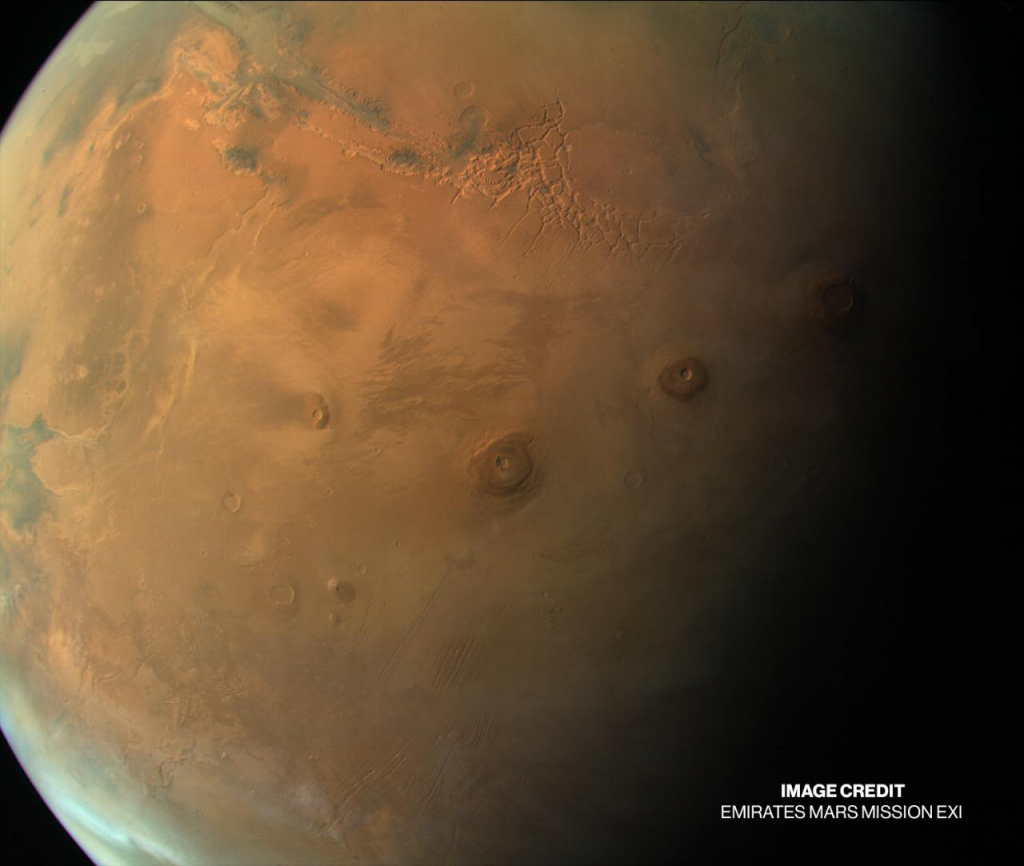
An observation of Mars by the EXI instrument showing vast regions on the Martian surface including giant volcanoes (at the center of the image), and the massive valley system Vallis Marineris (in the upper left). Ice and frost can also be seen near the polar regions at the bottom right. (credit: MBRSC)
The Emirates Lunar Mission (To launch in 2022)
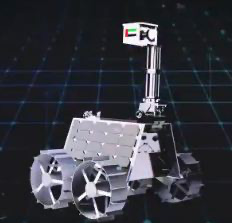
The Emirates Lunar mission is the next step in the UAE’s ambitious space exploration program as the UAE plans to send a rover (called “Rashid) to the Moon. The mission is expected to launch in October 2022 where the rover would be delivered by a Japanese lander. The planned landing site is in the Lacus Somniorum (“Lake of dreams”) region close to the Lunar Equator. The rover is planned to be equipped with high resolution visible cameras, thermal cameras, and a Langmuir probe to study the lunar dust and plasma. Our members would be involved with mission operations, data analysis, and eventual archiving of the mission data.
Colour and Stereo Surface Imaging System “CaSSIS” (2016- )
Mission: ExoMars Trace Gas Orbiter
Instrument website: https://www.cassis.unibe.ch
The European Trace Gas Orbiter includes the CaSSIS camera, which is a high resolution multi band camera that takes color and stereo observations of the Martian surface at a resolution of less than 5 meters per pixel. CaSSIS is designed in a unique setup and includes a rotation mechanism that allows the camera to take an image of the surface, rotate 180 degrees, and then take another image of the same area from slightly different viewing angle, which allows it to construct high quality stereo observations that allow us to view the surface in 3D, and in color! Our members are involved in data analysis and occasionally planning of imaging operations!
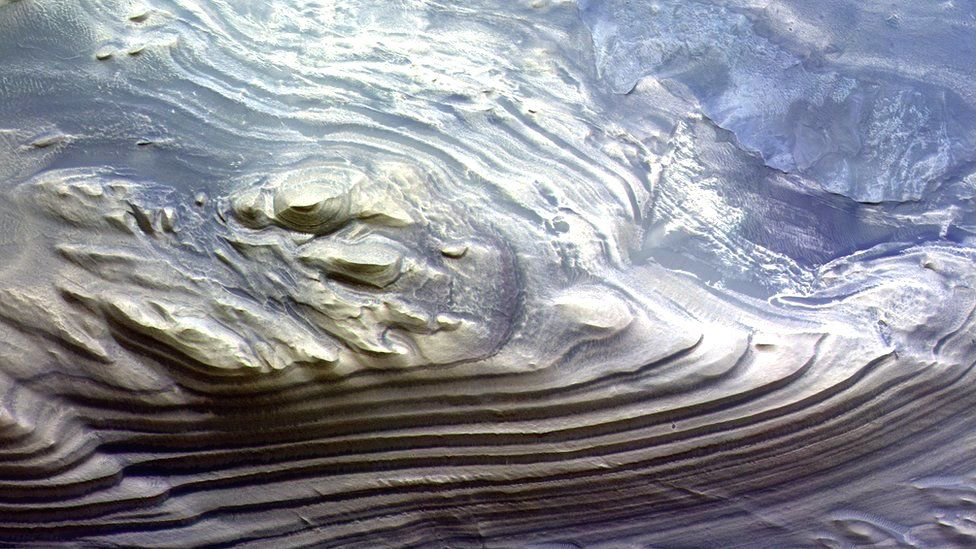
High Resolution Imaging Science Experiment “HiRISE” (2007- )
Mission: Mars Reconnaissance Orbiter
Instrument website: https://hirise.lpl.arizona.edu
NASA’s MRO mission has been in orbit around Mars since 2007. One of the instruments it has onboard is the HiRISE camera, which is the highest resolution camera ever flown to Mars. HiRISE is able to acquire high resolution images of the surface at a resolution of less than half a meter per pixel, and can generate images as high as 0.25 meters/pixel. This allows us to study the Martian surface and seasonal processes in very high detail. Because of its high resolution, HiRISE has also been used on numerous occasions to characterize potential and eventual landing sites for numerous NASA and ESA rover and lander missions. Our members are involved in data analysis and occasionally planning of imaging operations!
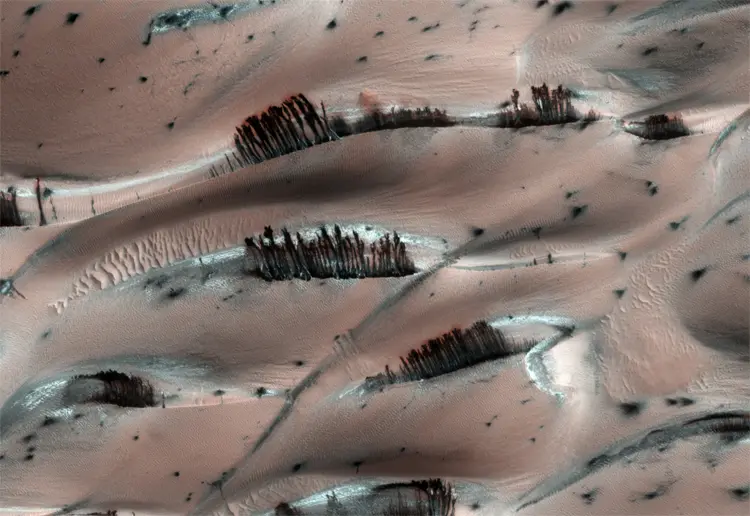
Comer Interceptor (Launch: 2029)
Mission website: https://www.cometinterceptor.space
The Comet Interceptor mission is an ambitious future mission operated by the European Space Agency (ESA) in partnership with the Japanese Space Agency (JAXA) to send a spacecraft and two additional probes to investigate a long-period comet, preferentially a dynamically-new one, or an interstellar object. The mission would launch along with another mission called ARIEL and would reach its “parking” destination in the L2 Earth-Moon Lagrange point, where the spacecraft would wait for the discovery of a long-period comet or a dynamically new comet entering the solar system for the first time. Once a discovery is made, the target’s orbital elements have been defined accurately, and a feasible trajectory has been planned, the spacecraft would be sent to “intercept” the comet and investigate it as a “flyby” mission. Two smaller probes would separate from the main spacecraft shortly before closest approach and head out in different trajectories to make simultaneous measurements and observations of the target from different viewing points, which would allow for a much better characterization of the surface and the surrounding dust and plasma environment. We are currently part of the mission’s science team, and involved in coordinating the nucleus science theme of the mission.
ExoMars Rover “Rosalind Franklin” (Launch: 2022, now delayed)
Panoromic Camera “PanCam”
Instrument website: https://exploration.esa.int/web/mars/-/45103-rover-instruments
The ExoMars “Rosalind Franklin” rover plans to explore the Oxia Planum region on Mars to better understand the ancient climate of Mars, and more importantly, search for signs of current or past life on the red planet. In order to do so, it has a drill that would allow it to drill down to 2 meters below the surface and acquire samples that have not been damaged by surface weathering or intense radiation to look for signs of current or past life. We are involved with the Panoramic camera on the rover, which is the principle scientific camera for the rover and would act as the “eyes” of the mission. The mission was due to launch in 2022. However, it has now been delayed due to political tensions in Europe.
